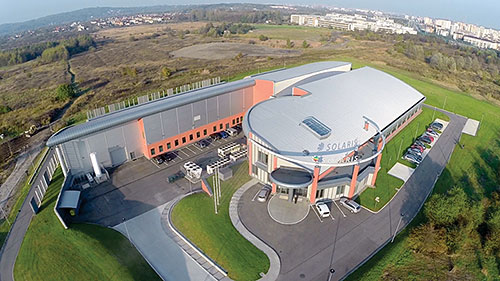Poland replicates Swedish light source
DOI: 10.1063/PT.3.2811
Poland’s first major scientific user facility will open for experiments this fall. The Solaris synchrotron light source is based on a replica of the 1.5-GeV electron storage ring under construction in Lund, Sweden (see story on page 21
Mikael Eriksson, accelerator director of MAX IV, the facility in Sweden, recalls how the idea came up during a 2008 visit to Krakow: “We decided, Why shouldn’t Poland jump on the train? If the machines are the same, they save on design work and get a flying start.” Scientists in Poland parlayed the replication idea into a case to the government that they could “build something special” with €40 million ($45 million), says Solaris director Marek Stankiewicz. The money came out of European Union structural funds, which are intended to help economically emerging member countries.
Solaris is located on the outskirts of Krakow on the new science campus of Jagiellonian University (see photo). The 96-meter-circumference electron storage ring holds 12 precision-machined iron blocks, each carved with two dipole magnets plus focusing and correction magnets. “The project is very sexy because of this technology,” says Stankiewicz. “The whole synchrotron is compact, and despite its small size, the beam quality is comparable with much bigger synchrotrons.”

SOLARIS TEAM

Piggybacking on MAX IV removes much decision making, particularly for the storage ring. But the injection linac is smaller, and other aspects of Solaris differ from the machine in Sweden. “The building, mechanical and vibrational stability, cooling water system, electricity are all challenging,” says Stankiewicz. Solaris will start out with 2 experimental beam lines and has space for up to 16.
Poland has sent teams of scientists to Sweden for training and to work on the design. And the two projects troubleshoot daily by phone and Skype. Says Bocchetta, “Replication requires a strong marriage between the teams.”
More about the Authors
Toni Feder. tfeder@aip.org
